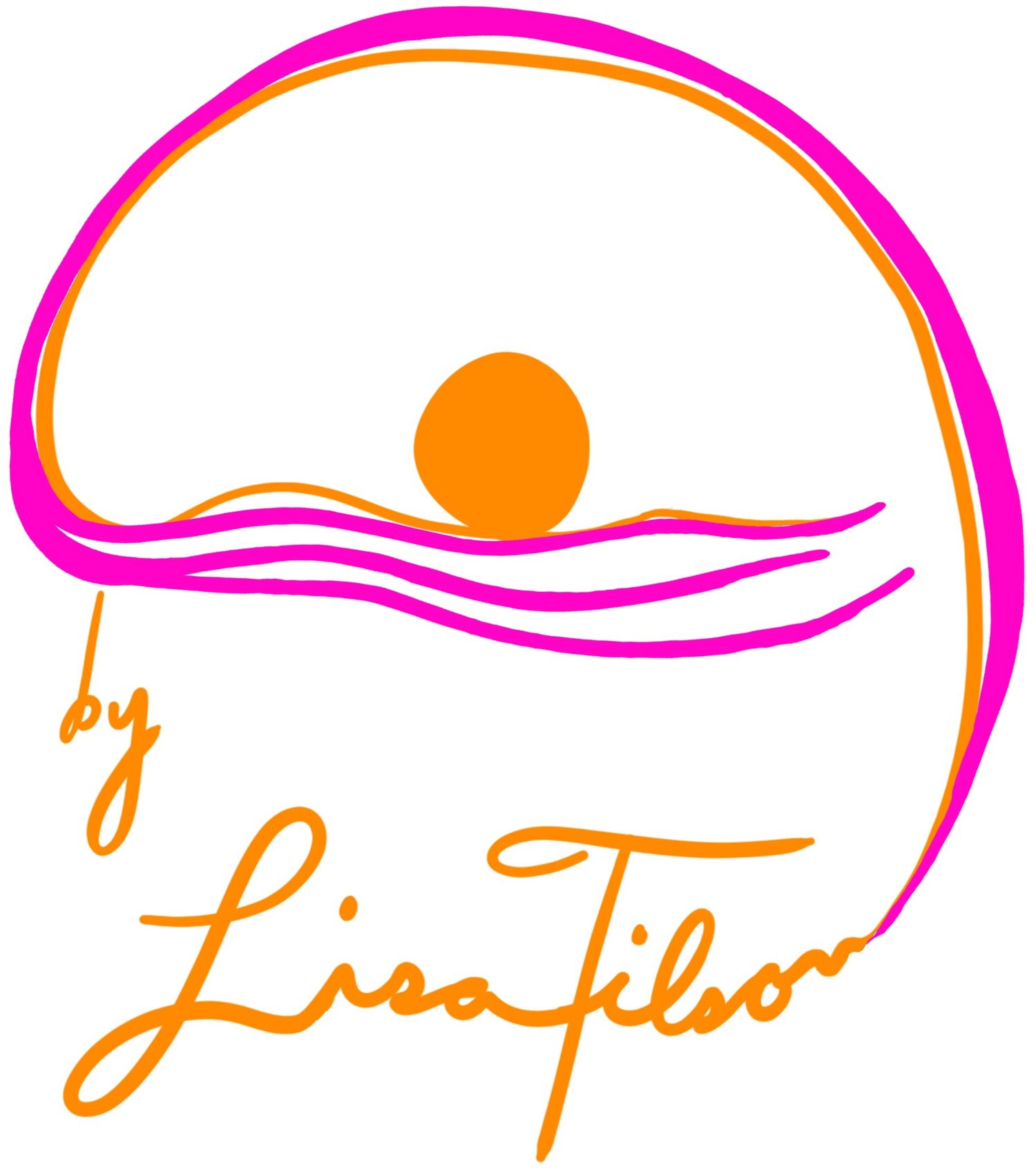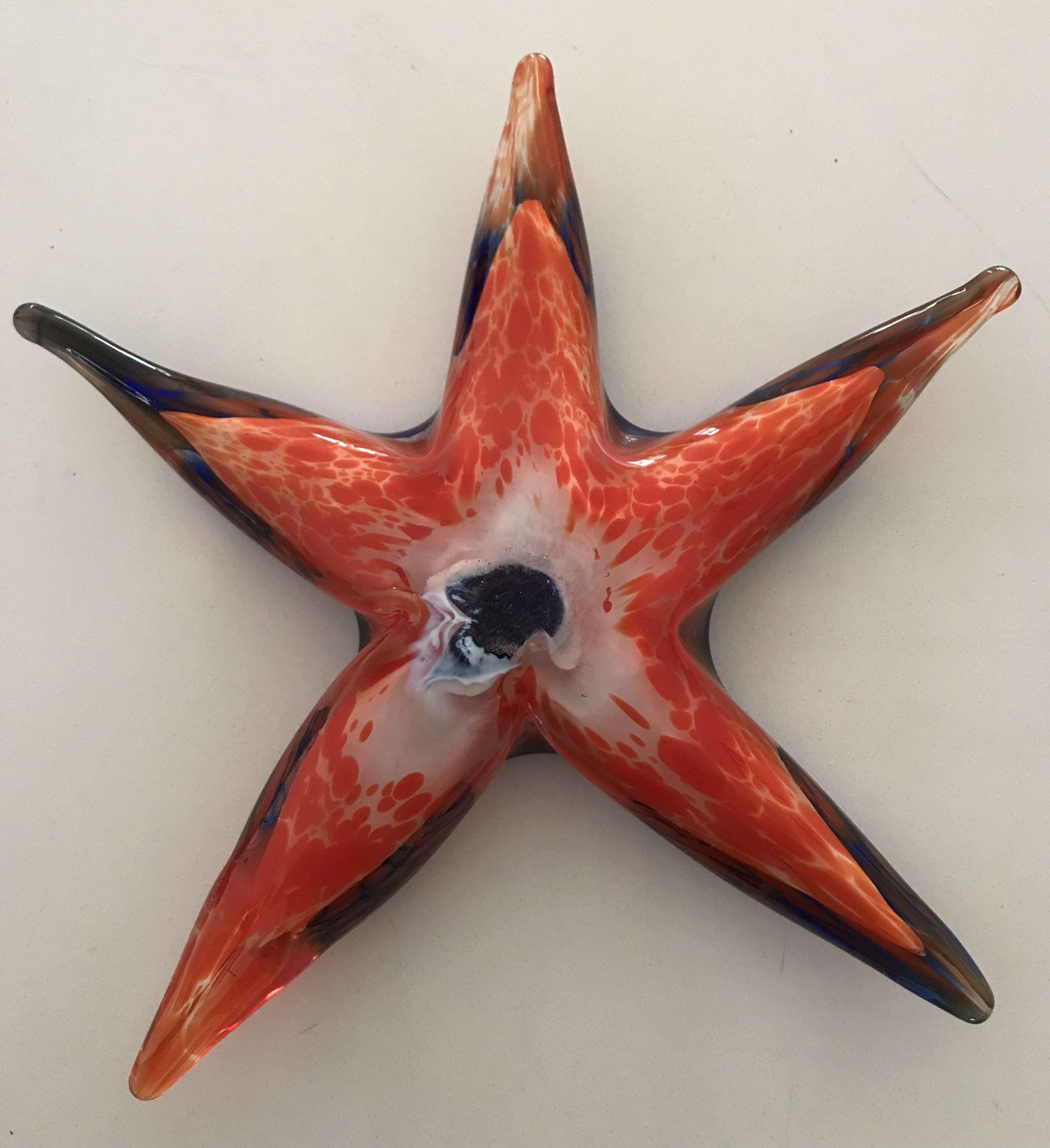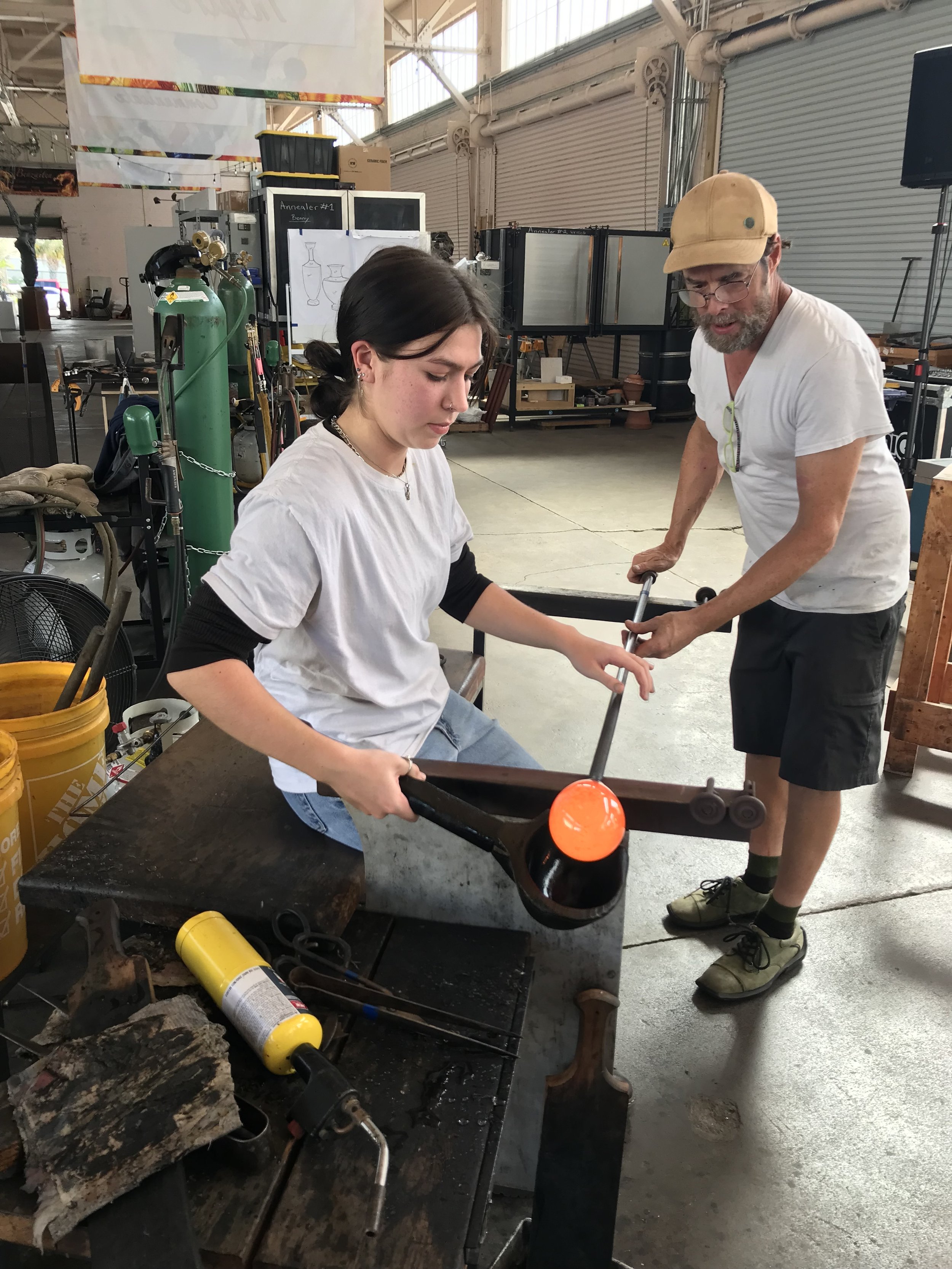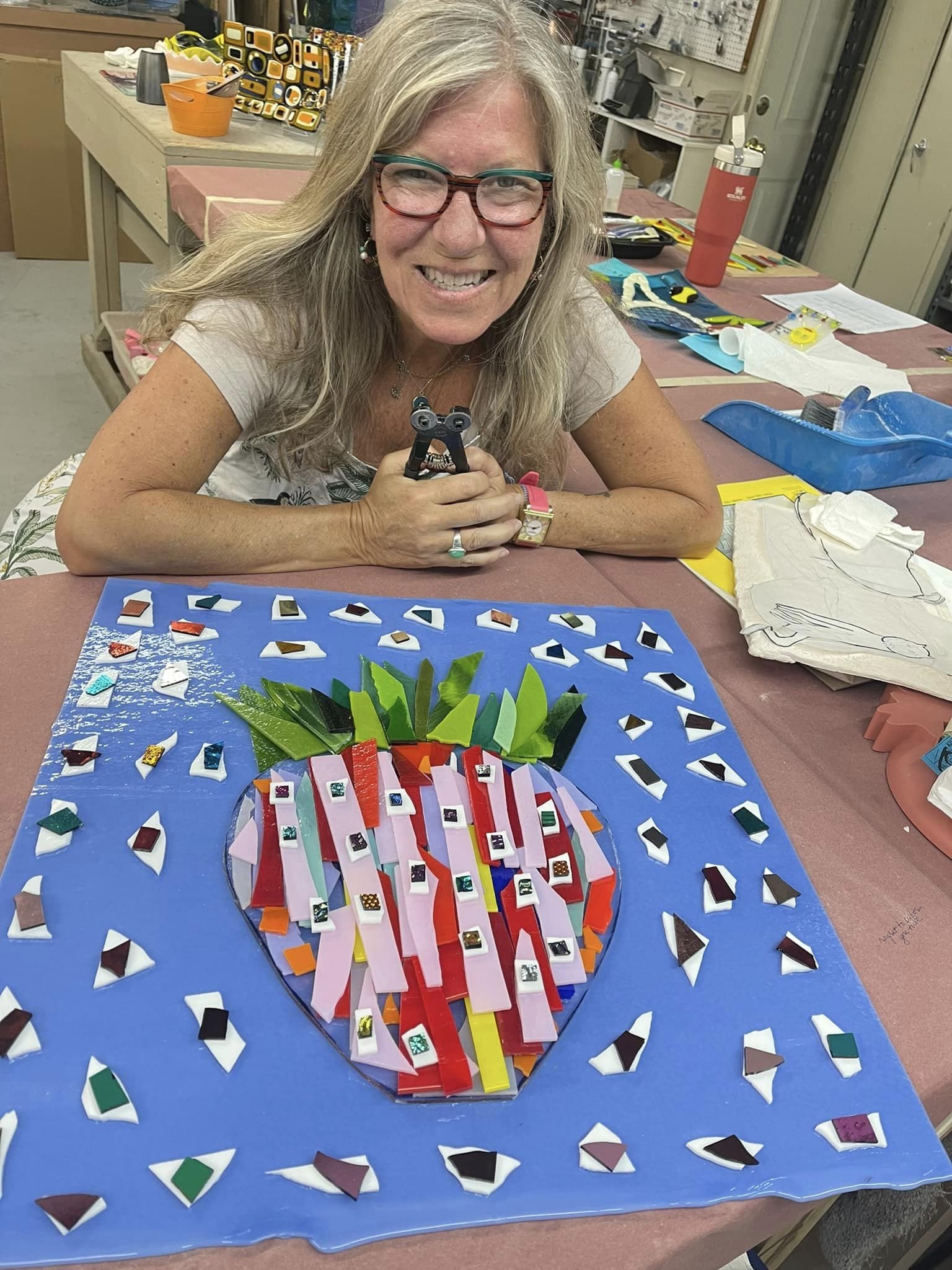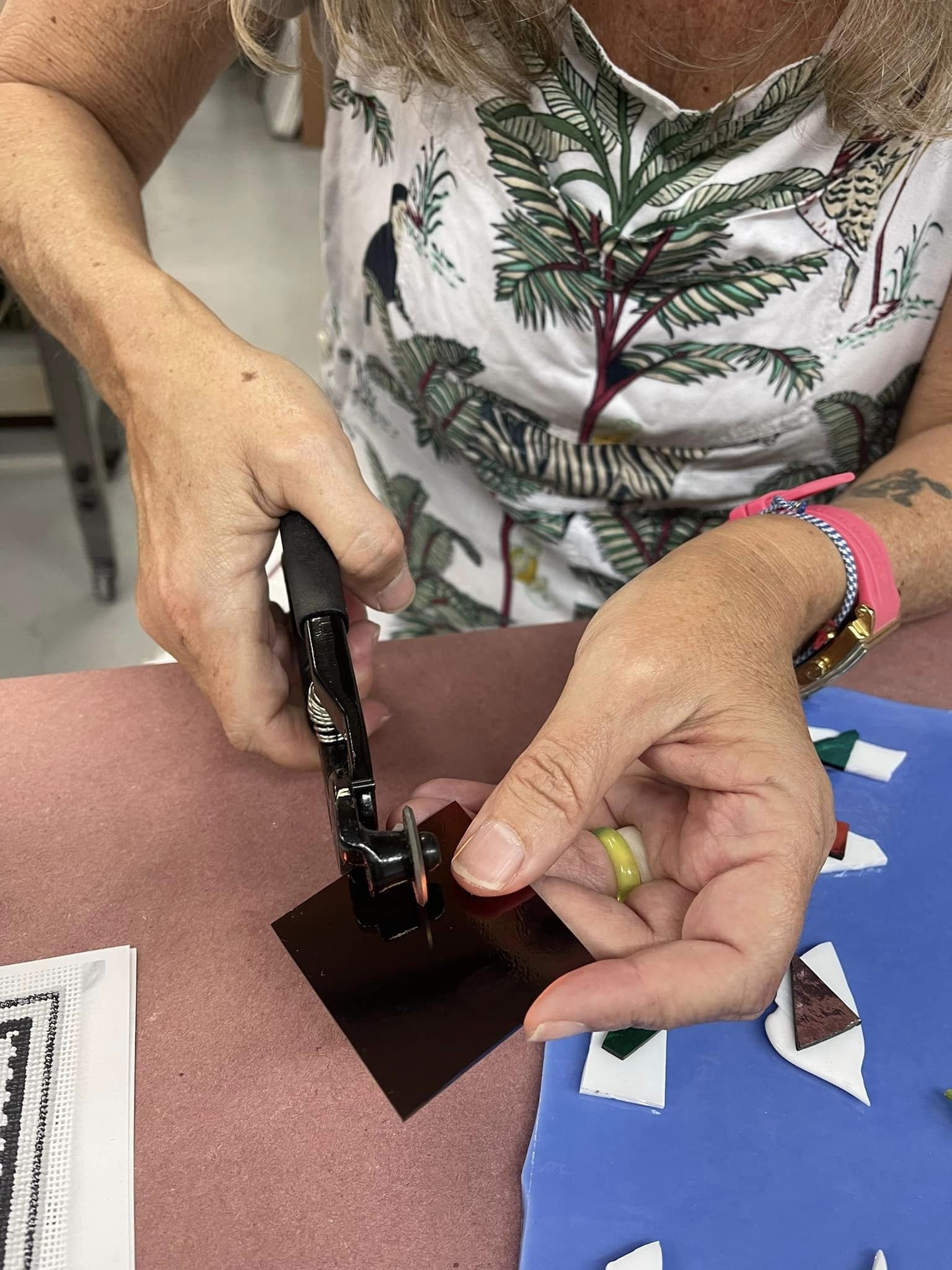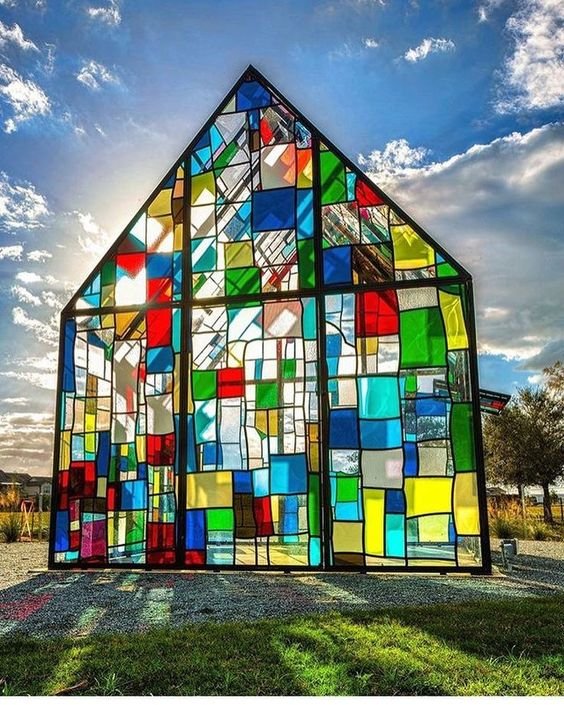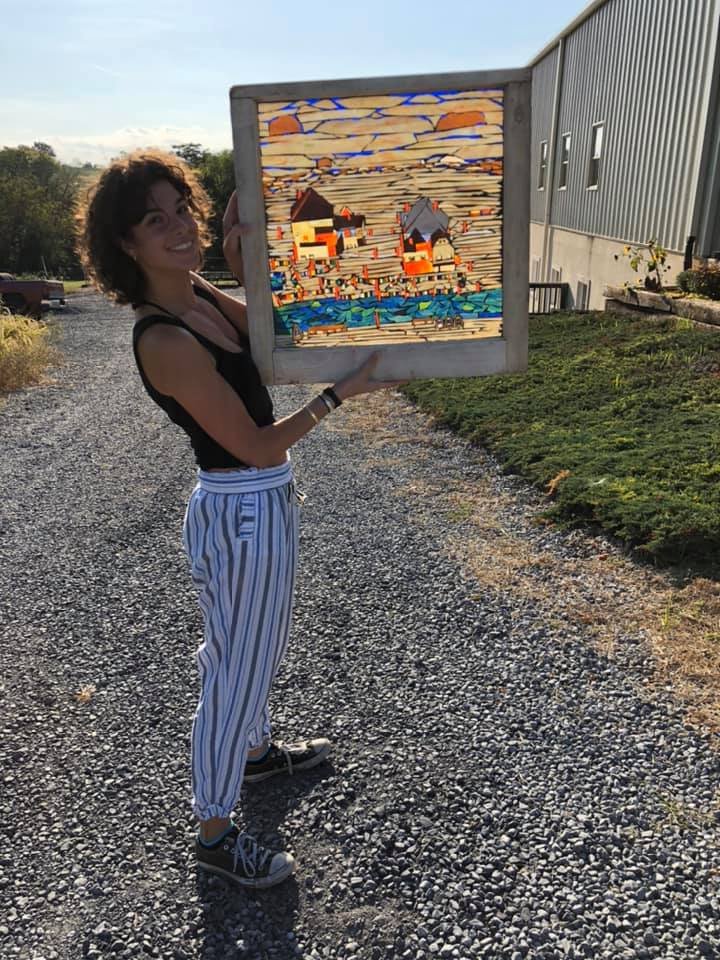Glass Techniques
Blown Glass
Blown Glass dates back to 100 BC. The technique spread rapidly across the Roman Empire and very little of the technique has changed since the early times. To create a blown glass object, the molten glass is gathered from the furnace on the end of a long hollow metal tube, the blowpipe. At this stage the glass is typically around 2100 degrees (Fahrenheit), and has the consistency of honey (it becomes very stiff at around 900 degrees). The glassblower puffs air through the blowpipe into the center of the gather.
A variety of tools are then used to shape the glass to form. As the glass cools it begins to stiffen and must be reheated to allow shaping and reshaping. For these re-heats, the glassblower uses a smaller furnace. The re-heats allow the artist to work on a piece for a long time, shaping and blowing until the desired result is achieved. When the piece is finished, it is placed in an oven, the Kiln for annealing.
I tried glass blowing with my daughter about a year ago and I would describe it as HOT and HARD. You cannot escape the heat of the furnace even when across the room. Typically you also need a partner, especially as a beginner since the technique involves blowing and twirling at the same time. Despite being difficult, I highly recommend trying it if you ever get a chance as well as going to any Chihuly installation/exhibit.
Fusing & Slumping
Fusing and Slumping are techniques that use flat pieces of (usually colored) glass (similar to the glass used by stained glass artists), manufactured with specific coefficients of expansion to make them compatible for melting together. Fused glass starts out in flat sheets of glass that are cut by hand or with a wet saw, and layered and arranged in a pattern and then fired in the kiln on a high heat, medium heat or low heat. Each variation in temperature with create a different effect- allowing for more detail and texture with lower heat. In Slumping, the glass is laid into, or on top of a mold and heated just to the point where it “slumps” or moves with gravity when it becomes fluid with the heat, to fit the form of the mold (Kanda). Once the glass reaches the desired form it is cooled quickly enough to stop the movement but slow enough not to destroy the crystalline structure. Although these methods sound simple, the objects created often have intricate designs. Hours of painstaking labor may go into the arrangement of the glass. Many of these pieces require multiple firings in the oven to achieve the desired results.
This is my technique of choice. I absolutely love the freedom of shape and color when I work with the glass- although the wet saw seems to hate me. I tend to fire with low heat to maintain detail and texture to my pieces and my only complaint is the lack of hot pink in any fusible glass…something about that specific pigment and heat is what I have been told. Hopefully I’ll live long enough that someone will scientifically fix that limitation.
Stained Glass
Stained Glass is a term commonly used to describe any colored flat glass or any object made of such glass joined by metal strips. The term originally applied to colored or clear flat glass cut to fit an artist’s design, on which details were painted in pigment with a brush. The glass pieces were then heated in a kiln or oven to bond the pigment to the glass surface. This firing makes the painted detail as durable and permanent as the glass itself. Most religious windows from medieval times until the 20th century were executed in this manner, and so the term came to be used first for any architectural application, and then for any design in colored flat glass. It is now universally accepted as a convenient general term to define the art, the craft, and the industry.
Many Fused Glass artists started with Stained Glass and probably got frustrated with the perceived limitations that adding soldered metal has to creating with glass. Similar ascetics can be achieved with Fused Glass (creating intricate glass patterns) which is why the two artforms often are confused with each other. My favorite modern Stained Glass artist is my Cousin, Lily Landi!
